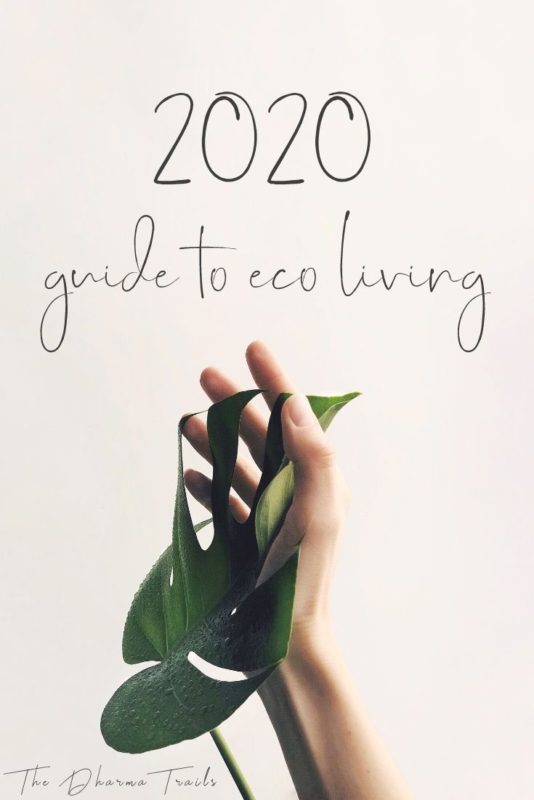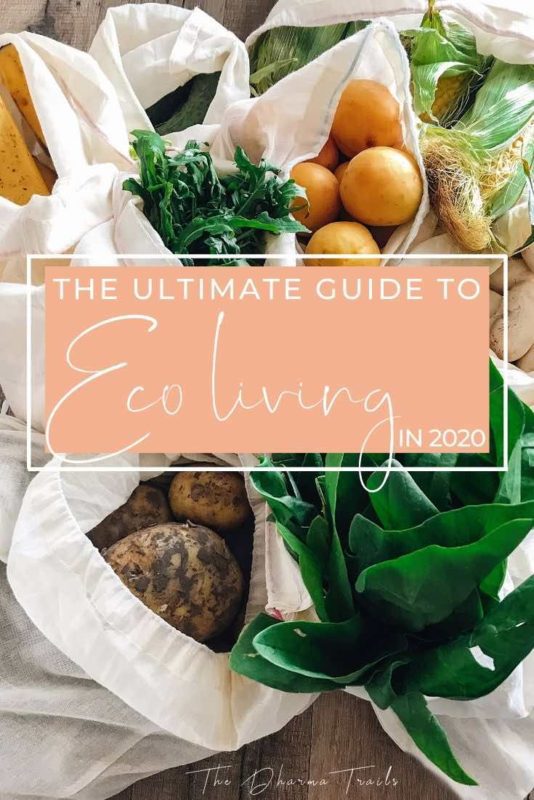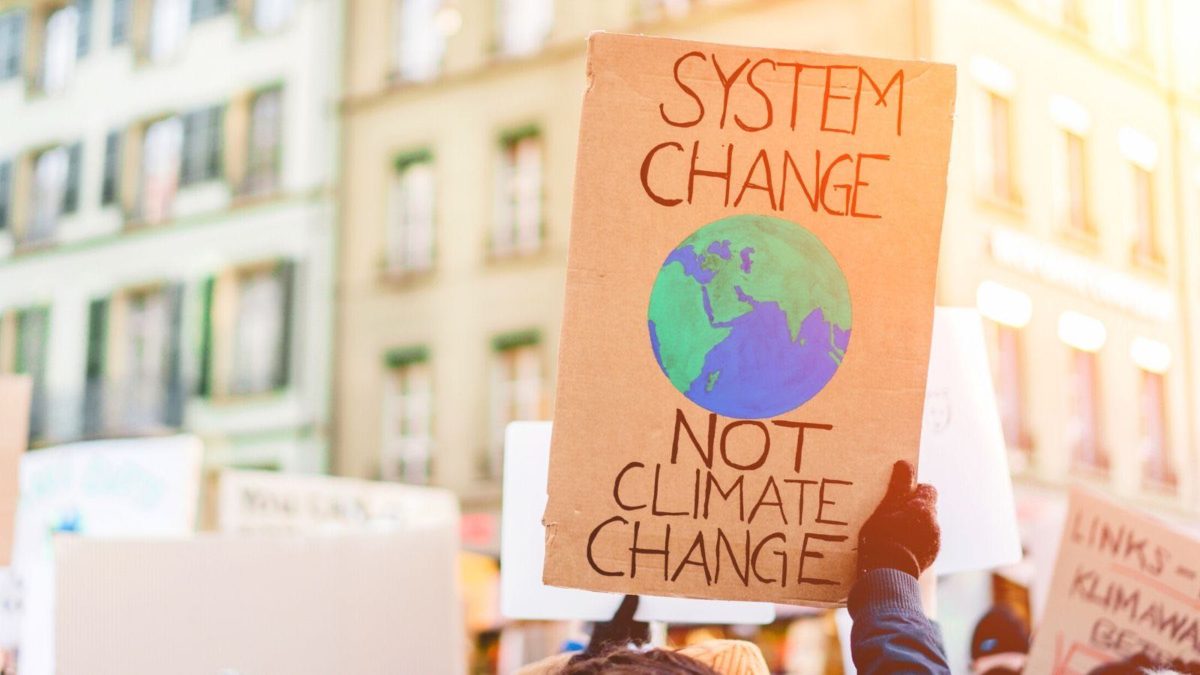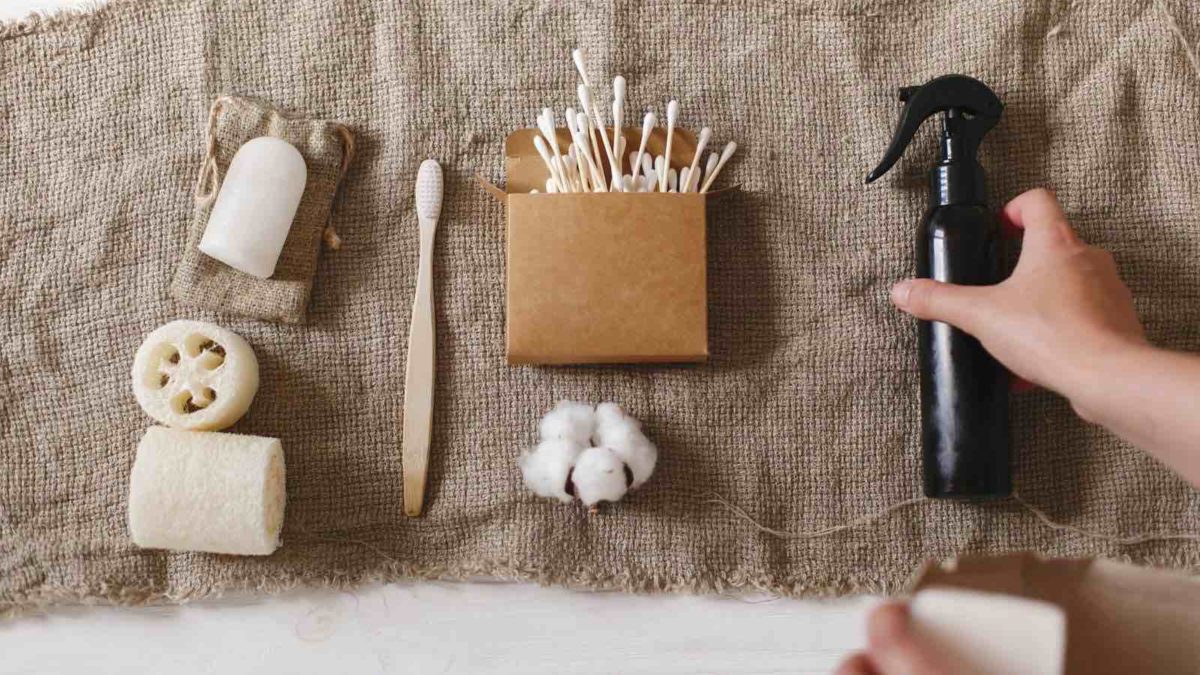There has been a significant push towards Eco Living over the last few years. The global climate crisis has been attracting headlines and for good reason:
This post may contain affiliate links, which means I may earn a commission if you click a link and make a purchase. As an Amazon Associate, I earn from qualifying purchases.
- The ice caps really are melting at an alarming rate
- Plastic pollution is killing huge amounts of marine life and even getting into humans through the food chain
- A huge number of animal species are going extinct due to human-induced habitat loss
It might all seem overwhelming, and sometimes it is. But there are ways in which we can all live to not only feel better about our impact on the environment but actually be better for the environment too.
Eco Living starts with individuals and spreads into communities and eventually (hopefully soon) into countries. We make thousands of little decisions every day. By following this Green Guide, you can encourage many of those decisions to be a little bit greener.
Table of Contents
What is Eco Living?
It might not be as unattainable as you think. People’s perception of eco living is often staying on a remote farm and picking vegetables from the organic garden. While that might be one of the ways to do it (one of the better ways), there is actually a scale of “eco-ness”.
Working out where you want to sit on the scale of eco-ness will be up to you.
The Dharma Trails
This article will review the ways in which you can better “eco-fy” your lifestyle and what kind of results you can expect in return.

Eco friendly definition
When referring to eco living, the term eco friendly comes into play. There is no real definition of eco friendly (due to the scale of eco-ness).
However, the Cambridge Dictionary defines “eco friendly” as:
Eco-friendly products have been designed to do the least possible damage to the environment
The Cambridge Dictionary
The words that make this definition relative are “least possible”. It goes back to the idea of “eco-ness” being a scale from “very eco” to “just a little bit eco”. This whole range can still come under the phrase “eco friendly”.
The Eco-ness Scale
This eco living guide looks at a variety of lifestyle choices and their relative positioning on the “eco scale”.
What is the eco scale? It’s a way to define our options and actions into levels of eco-ness. For example, a lightbulb.
There’s been a big push to switch lightbulbs over the years to “energy-saving” bulbs. This is a great move in theory. Is it an eco living positive move, yes. Is it the best? That depends where you are happy to sit on the eco scale.
- How you use the lightbulb is something to consider. Do you have it on when no one is in the room?
- An energy-saving lightbulb that runs on solar or a wind turbine is more eco
- Replacing the energy-saving lightbulbs with sustainably sourced candles is another eco option (is it more eco? Depends if you need to ship the candle a long distance, etc)
- Replacing the lightbulb with skylights (direct holes in the roof to natural light) may be even more eco
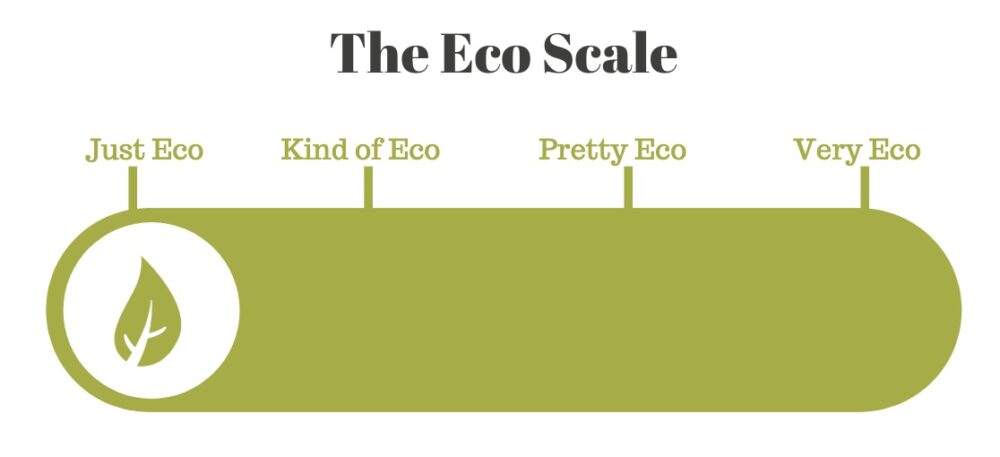
In our modern-day life, what we are willing to do and where we are willing to sit on the eco scale is a delicate balance with comfort, functionality, and efficiency. The idea is that we not only make decisions in our day to day life that are “eco”. But ones that are as eco as possible while still maintaining our level of happiness.
If the whole world decided tomorrow to make every choice a “kind of eco” one, it would have a huge positive environmental effect.
Eco Scale Definition
Due to more and more companies “greenwashing” (using the term eco and eco friendly) without any real way to be proven otherwise there needs to be a discussion on what eco really means.
For the sake of this article, we have decided to loosely quantify the subject for discussion. We’ve used an example of a cafe, and improvements are based on relative improvements from a “normal” cafe that does not call itself eco or sustainable.
Just Eco
Making minor changes to an element or product in the order of 5% improvement.
For example, a cafe has changed from plastic straws to paper straws. However, nothing else has changed. They still run high levels of power, have large volumes of waste, import all of their ingredients, etc.
Kind of Eco
Making a few changes to an element or product in the order of 15% improvement.
For example, a cafe has changed from plastic straws to paper straws. They have also removed single-use plastic cups and food containers. Everything else remains the same.
Pretty Eco
Making significant changes to an element or product in the order of 50% improvement.
For example, a cafe has:
- changed from plastic straws to paper straws
- removed the single-use plastic cups and food containers
- non-toxic cleaning products and buys their produce from sustainable sources.
Very Eco
Making significant changes to an element or product in the order of 85% improvement.
For example, a cafe has:
- changed from plastic straws to reusable metal or glass straws
- removed single-use plastic cups and food containers, offering organic alternatives.
- non-toxic cleaning products
- vegan options on their menu, purchases their produce locally from sustainable sources
- means to give back to the local community
- solar panels or alternative off-grid means
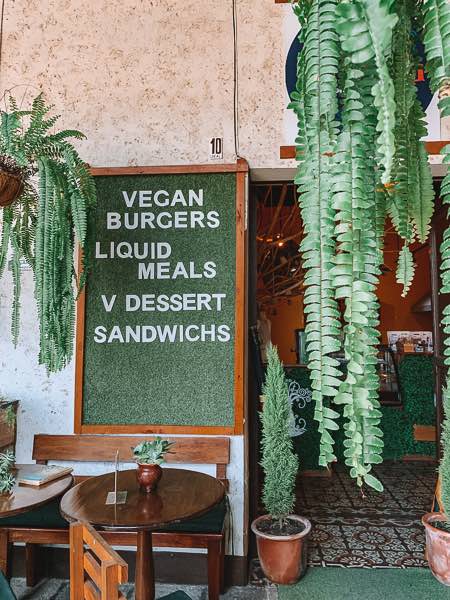
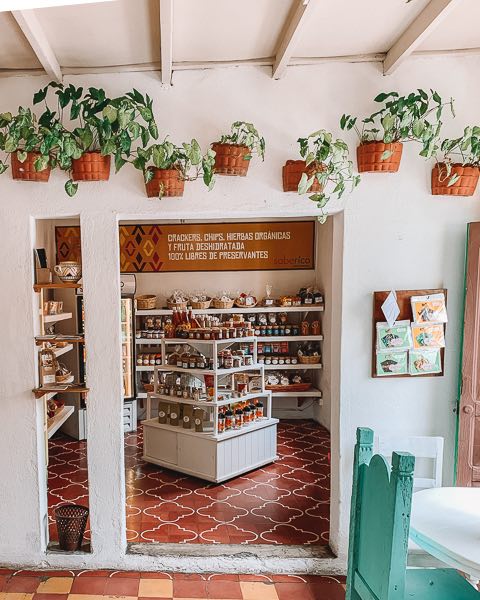
Subjectively Eco
The idea at this stage is that everything is subjectively eco. Meaning we have to make judgment calls when calling things eco.
There are a lot of examples out there (that we will go into) that show various levels of eco-ness that are portrayed by clever marketing.
Be aware of “Greenwashing”
The concept behind the above-mentioned eco scale is to prevent the notion of companies or products from greenwashing (stating that they are eco). When in fact they may not really be eco. There have been many companies try to do this, for example:
- Ryan Air – recently had adds removed that claimed they were the UK’s lowest emission airline (when they were not).
- BMW – had adds for their i3 electric car removed after claiming they were “zero emissions“, when in fact this was not true.
- We recently visited a cafe that calls itself the “Sustainable Bakery”. Once we saw them serving food in single-use plastic items we could not support their “sustainable” labeling.
How To Start Living Eco Friendly
You may or may not have been subjected to Green Washing at some point. Whether you were aware of it or not is the question. Once you recognize that there are certain levels of eco-ness and green concepts to look out for, your sense of eco living is sure to improve.
There are lots of little ways and decisions that we can make every day towards an eco living lifestyle. However, they can be summarised into four main categories:
Reducing:
- Energy use
- Waste
Increasing:
- Active environmental care and rejuvenation
- Protection of the natural world
When you put it like that it seems pretty straight forward. But how do you go about achieving these goals?
Let’s break them down into a couple of main categories:
- At Home
- Out and About
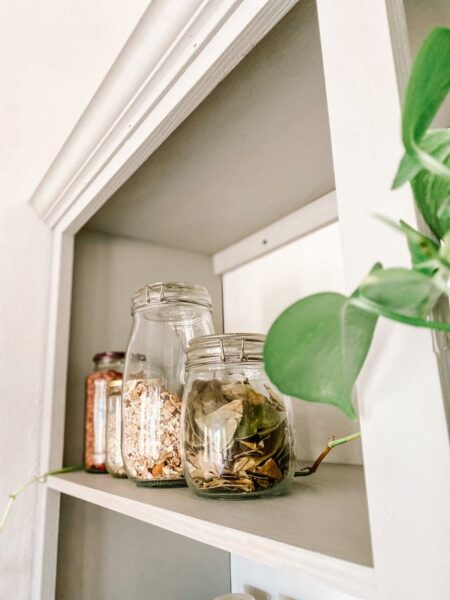
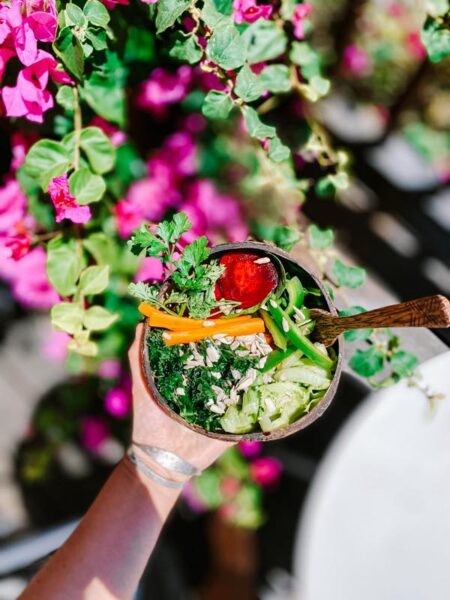
Eco Living at Home
What better way to start eco living that right in our home. There are so many ways in which you can improve the eco-ness of your house or residence.
Energy Efficiency in Homes
Households use a lot of power. But where is that power being used and how can we reduce it? Here are the top three ways to reduce power use in your home:
- Reduce Your Air-conditioning – in a “typical” home, heating and cooling a home uses the most energy by far (around 50% of total household energy consumption). This may mean improving your home’s insulation (cold climate) or airflow (in warmer climates). Here is an example of how the eco scale might look:
- Just Eco – running your air-conditioning at a few degrees lower (closer to room temp) for a few hours less a day
- Kind of Eco – Switching to a more energy-efficient air-conditioning
- Pretty Eco – improving home insulation, energy-efficient unit running infrequently at a closer to room temp,
- Very Eco – Create a more open-air plan to allow natural airflow for warmer climates, install solar panels and connect to an energy-efficient unit
- Use less hot water – after heating your home, heating your water uses (on average) the second most amount of power in households. You can try solar geysers (solar-powered water heater on your roof). Here is an example of how the eco scale might look:
- Just Eco- have shorter showers
- Kind of Eco – Switching to more energy-efficient heating devices
- Pretty Eco – Take short showers using energy-efficient heating devices
- Very Eco – Switch to solar geysers to heat showers
- Wash and dry your clothes less. These machines use a lot of power. Here is an example of how the eco scale might look:
- Just Eco – do less but bigger washes each week (make sure the machine is full), wash at cold temperature.
- Kind of Eco – Switching to a more energy-efficient washing machine, wash at cold temperature, do a big wash each week (make sure the machine is full).
- Pretty Eco – Switching to a more energy-efficient washing machine, wash at cold temperature, wash clothes less regularly (not until they are actually dirty or smell bad), hang your clothes to dry. Use natural detergent.
- Very Eco – Hand wash any stains, use a natural detergent when washing. Use an energy-efficient machine to do a large load using cold water and short cycles. Use a guppyfriend washing bag for any synthetic clothes to catch microplastics. Air dry clothes.
>> Click here to learn more about Reducing Your Carbon Footprint
Reduce Waste in your Home
There are a couple of main ways to reduce waste in your home. In this sense, we mean waste as a byproduct. The two main sources of waste in a household are:
- Organic
- Inorganic
Household food waste is still a huge issue in developing countries. Not only is the food waste a waste of money, but it is also a loss of calories and carbon emissions (energy used to produce and deliver the food).
But one of the main issues with food waste is the fact that it ends up in a landfill. Food doesn’t break down in landfills. Nothing does. As much as we’d like to think that an apple core in a landfill will breakdown over time and create more space for the one above it. The shear biochemistry of landfills won’t allow it.
Organic products can only breakdown if they have air. Piled under huge volumes of trash (a mix of plastic, food, etc.) there is no air for organics to biodegrade. So, piles just keep staking up.
>> Click here for ways to create a zero waste kitchen at home
Limited Landfill Space
At present, the USA is on track to run out of landfill space in the next 18 years! We need to put less into these landfills. Is this possible? Yes.
Eco Scale of Reducing Organic Waste At Home
Here’s an example of how the eco scale for reducing waste may look:
- Just Eco- buy less food. If you are throwing out lots of food each week, you might be buying too much
- Kind of Eco – plan ahead and check the use-by dates, give leftovers or surplus food to friends/family
- Pretty Eco – Keep track of what your buying and what needs to be eaten. Batch cook and freeze, have a small compost in your kitchen, and take organic waste to a larger composting bin or organic waste bin
- Very Eco – plan ahead and don’t overbuy, find out ways to store your vegetables in the fridge so they stay fresh longer, prepare perishable foods as snacks for the week, use edible food scraps to make stock, compost all remaining waste in home compost, use for gardening or donate compost to those who need it
>> Click here to learn about plastic bag alternatives to garbage bins or how to recycle plastic bags
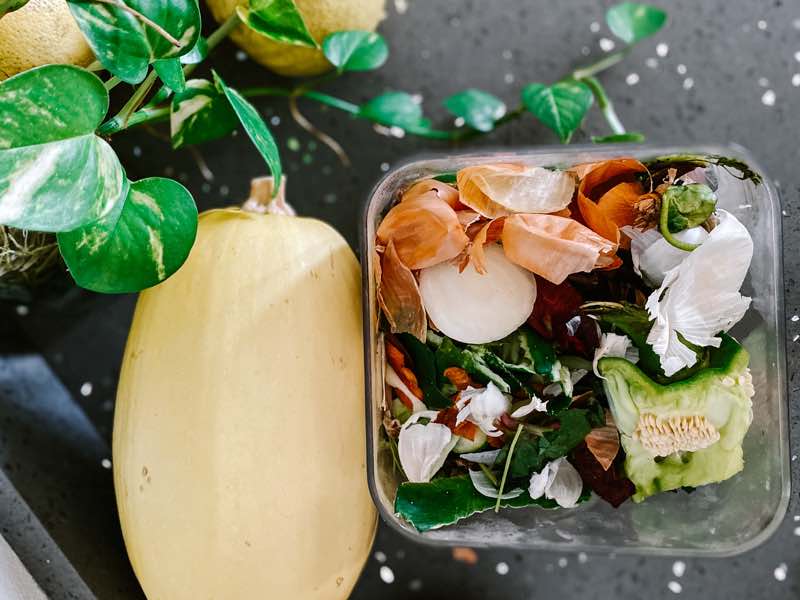
Eco Living Out & About
We can improve our homes and way of living to be more eco friendly. But what about the rest of the time?
There are lots of ways in which we can improve our eco-ness while out and about. Whether you’re simply heading to the shops or you are traveling across the globe, you can start to notice the eco scale and how to best achieve eco living.
Zero Waste Shopping
Unless you live on a fully self-sustaining farm, you will have to buy things. Food, clothing, equipment, etc. Whether you enjoy the shopping process or not, there are ways in which you can go about it more eco friendly.
One of the keys ways to improve your shopping style is to reduce waste. We live in a consumerism society when often more is better. This is having significant negative environmental impacts. Waste in shopping occurs both on the production/manufacturing side and the consumer side.
Learning how to pick brands and companies that follow sustainable practices will help to reduce your waste and negative impact on the production side.
Zero Waste Shopping is the goal. Let’s aim for that.

How to Zero Waste Shop
While “absolute zero” waste is often not physically possible to achieve. There are many ways in which you can significantly reduce your waste.
Apart from the manufacturing/production side (which most consumers have no control over), the ways in which you can improve your shopping include:
- Buying local as possible – less travel means less carbon footprint
- Sustainable brands – check out our eco store for sustainable brands inspiration
- Shop less – less traveling, less waste, only buy what you really need
- Bring usable bags – the best way to avoid plastic bags!
We all need to shop. So, how would it look on the eco scale? Here’s an example of how the eco scale for food shopping may look:
- Just Eco- buy less food, bring reusable bags.
- Kind of Eco – buy less food, bring reusable bags. Shop at local stores and farmers markets
- Pretty Eco – as above and pick sustainable brands and products that focus on reusability.
- Very Eco – as above. Buy even less, and make things yourself. Can you fix old clothing items? Can you grow your own tomatoes? Make your own crackers to avoid plastic packaging. Shop at bulk stores.
What about online shopping vs going to the shops? Is one better (more eco) than another? It depends where you live.
A study by MIT in 2013 looked at the difference in carbon footprint between shoppers. In summary, for those:
- Living in city areas – physical shopping is better (if you can walk and take public transport)
- Suburbs it works out better to get online shopping delivered
Dining Out
When you cook at home you can keep track of your eco-ness. You can buy all the right things, cook in the right way and process your waste in the best possible way. But how can you control your eco living choices when you are dining out?
There are more eco conscious restaurants and hotels that are making green waves in the hospitality industry. Things to look out for when a venue calls itself eco include:
- they say no to plastic! There’s no need for places to use single-use plastic anymore (even takeaways)
- their produce is sourced locally from sustainable sellers.
- the menu is plant-based or they have plant-based options
- they say no to products that contain Palm oil. Palm oil products are having huge effects on our ecosystem, with the destruction of rainforest is happening at an alarming rate.
For an example of a food venue that calls itself eco (one you should look out for), refer to the example used in the eco scale definition.
Eco Diet
From an environmental perspective, meat and dairy use significantly more water and energy to produce and creates a higher amount of waste and pollution than fruit and vegetables.
The best eco living choice is to eat vegan, however, it can be difficult to transition to if you aren’t vegan. Here are some tips if you are looking to make the lifestyle change:
- Take it slow: Try having a vegan day each week, swap to plant-based products one at a time e.g. coconut or almond milk.
- Try different vegan recipes: eating vegan can be delicious, and there are so many plant-based alternatives out there (including plant-based bacon!). Find what works for you.
- Get informed and inspired: whether it’s your concern for animal cruelty or the climate crisis, there are plenty of documentaries to help you get informed and inspired to change and stick to a plant-based diet.
- Dine at Vegan and vegetarian restaurants when you are out and about: There’s plenty of plant-based restaurants around the world, from Australia to Guatemala, we’ve found some delicious vegan cafes to eat at.
Transport
In most cases, if you leave your house, you will need to take some mode of transport to get to your destination. Eco Travel is becoming a hot topic around the world due to the nature of its scale.
In most cases, eco travel is referring to holiday making/vacationing. But this does have to be the limitation. Eco travel can start from the moment you leave your house. Here is an extract from our free downloadable eco travel book.
- Walking – It is still the best low-impact form of travel. However, it is limited by time and oceans. Try a free city walking tour when you are in a destination or plan a hiking holiday.
- Cycling – it has a low carbon impact but is also great for your health and fitness. More cities are creating bike lanes which are a huge win. If you are worried about the distance, try an electric bike to help you get around!
- Trains – is one of the best forms of transport for personal Carbon (C02) emissions. They are very efficient, with a relatively low environmental impact. Try a Euro Rail monthly pass or an Amtrak (USA) monthly pass.
- Cars/Vans – At this moment, fossil fuels are the main driver of motor vehicles. However, there are alternatives, like electric cars that can reduce your carbon footprint or you can try “ride-share” options in apps like Uber.
- Airplanes – Planes, unfortunately, have the largest environmental impact for travelers. If you are going to fly, fly as direct as possible, select fuel-efficient airlines (EU, US, AU) and carbon offset/inset your flight.
- Sailing – It is a fun experience and great for the environment as they use mostly renewable energy (the wind). Try using a platform like Crewbay to find a sailboat looking for an inexperienced crew

Why try and define an Eco Scale?
The idea of the eco scale is not to eco shame a place, person or company. It is more a reminder that there are always ways in which we could do better. It is to encourage more people and companies to make better choices to keep moving up the eco scale.
Making small changes one at a time
The key to eco living and the eco scale is to keep moving up. Become aware, do some research, and watch some sustainable documentaries. We can take small actions at a time, yes. That’s great. And if the whole world took small steps towards living green it would be an amazing shift in the planet’s wellbeing. But these small changes should not be taken as an end goal.
Keep moving forward
If you’ve bought some eco friendly toiletries or eco travel products, that’s great! You’re making small changes to your everyday life to improve your environmental impact. Keep those small changes going.
You can start with one room in your house. Let’s say the bathroom.
- Swap your toothpaste for zero waste toothpaste brands
- Change your shampoo to zero waste shampoo products
These are just two examples to get you going. Once you make changes in one room, you can start in another, and another.
Move outside of your house one step at a time. You can change the way you interact with the world, one green step at a time.
Like this Article? Pin it!
